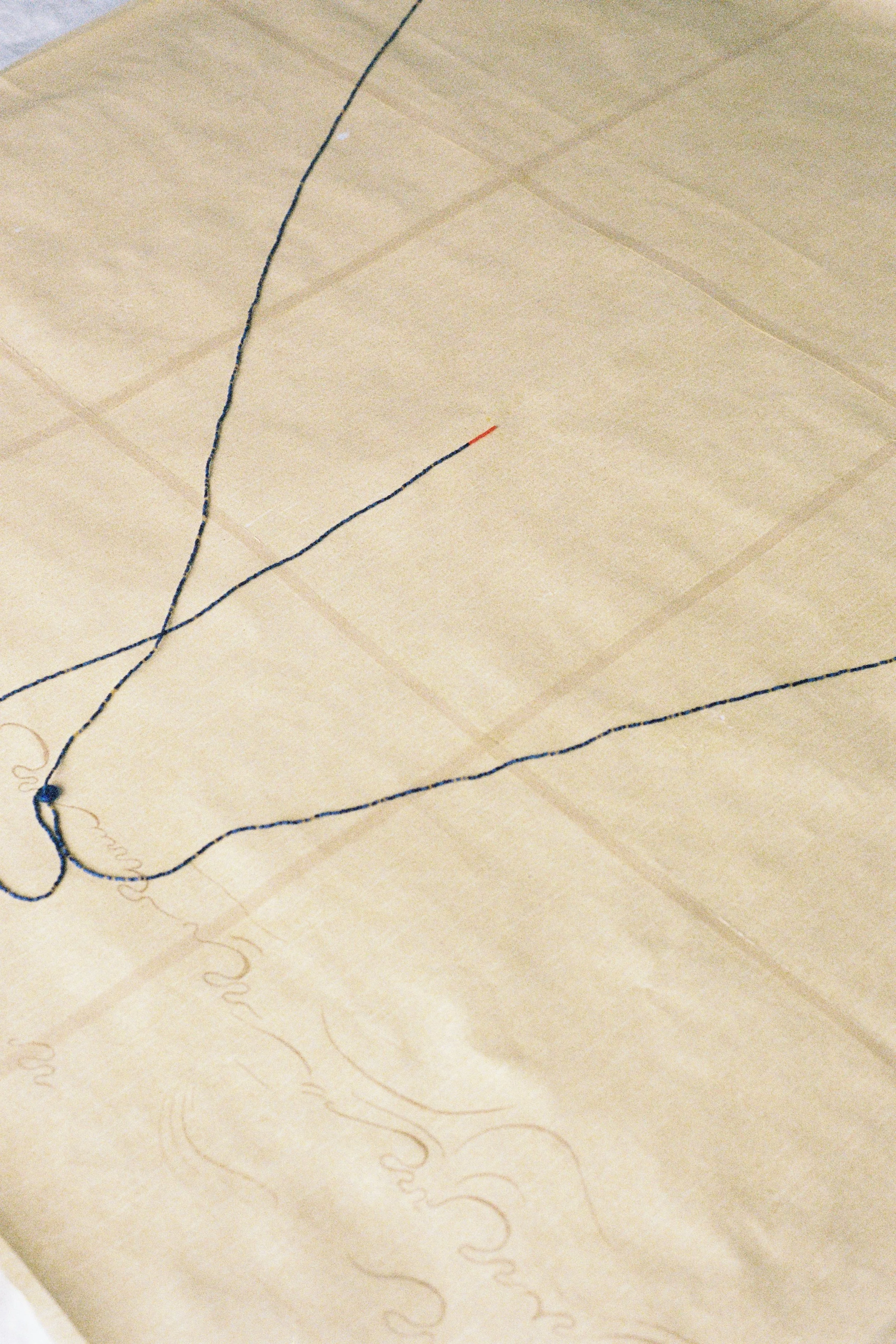They farmed tapioca, oranges and rice
Exhibited at the Australian Design Centre, 2024
Developed in residence at Bundanon Trust
Supported by Creative Australia
They farmed tapioca, oranges and rice poetically examines the multiple cultural and biological lineages that artist Camille Laddawan and her partner Roslyn Orlando will share with their child.
Through the process of understanding a child’s origin story, the birthing parent, the non-birthing parent, and the donor each hold and offer a different relationship to ancestry and heritage. Each has a nuanced history of tradition, migration, cultural loss, and change. This body of work seeks to understand the relationships between what is inherited, and how these different threads culminate in the understanding of a child’s own identity through storytelling.
Inscribed within three gold beadings are fragments of stories passed down by the three matriarchal lines that link the child together, with cultures comprising Thai, Laotian, Cambodian, Dai, Greek and Cypriot. Each fragment has been written in code, alluding to the work of trying to find and collect histories that haven’t been formally recorded.
The exhibition also includes a hand-made kite with a woven tail of glass seed beads. Referencing official records, public archives and family trees, the kite tail lists names, birth dates and locations of the child’s various ancestors as remembered and described orally in conversation. The symbol of the kite is drawn from a childhood story that Camille’s mother recalls of kite fighting with her brother in Bangkok, Thailand.
A selection of family ephemera, collected during research for this exhibition, includes photos, plant matter, iconography, and symbolic objects. This personal collection of artifacts references the aesthetics of a museum exhibit, providing visual cues to the oral stories told within the beaded works.
Kite, ว่าว, χαρταετός, 2023 (detail)
Rice paper, wood, glass seed beads
Exhibition install at the Australian Design Centre, 2023
Photo by Amy Piddington
Fragment One, Fragment Two and Fragment Three, 2023
Glass beads, 24 karat gold, thread
52cm x 52cm (framed)
Photo by Amy Piddington
Fragment One, 2023
Glass beads, 24 karat gold, thread
22cm x 22cm
Kite Tails and Artefacts, 2023
Glass beads, ephemera
Photo by Amy Piddington
Kimberley / Pak Pao Kite and Mali / Jasmine, 2023
Archival pigment prints on fibre rag
Kite, ว่าว, χαρταετός, 2023 (detail)
Rice paper, wood, glass seed beads
Kite, ว่าว, χαρταετός, 2023 (detail)
Rice paper, wood, glass seed beads
Kite, ว่าว, χαρταετός, 2023 (detail)
Rice paper, wood, glass seed beads









